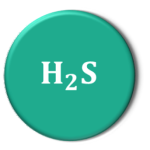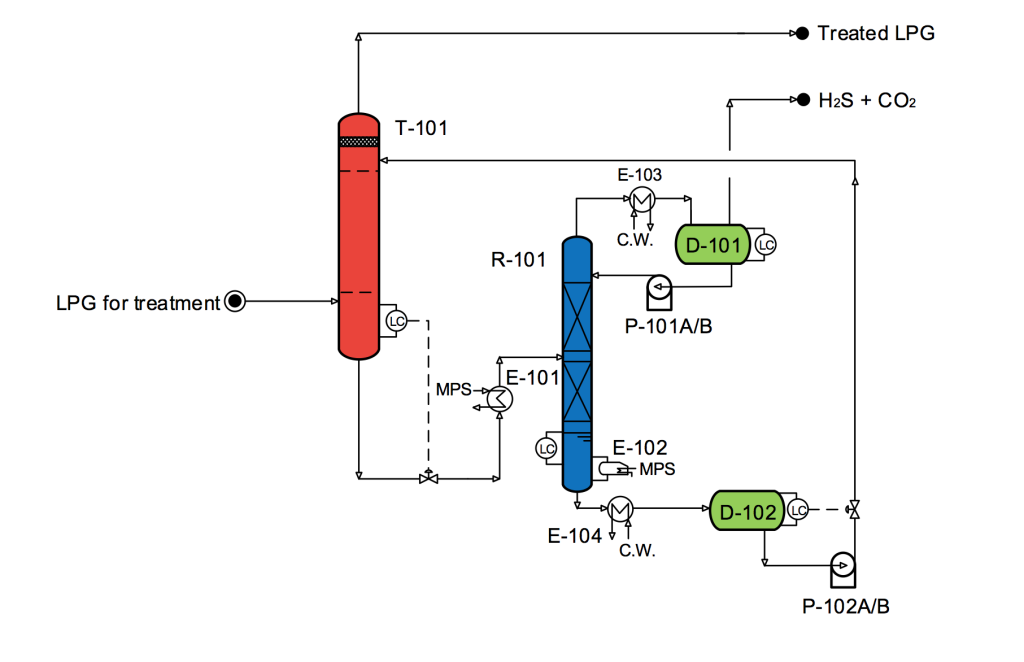 TECHNOLOGY OF LIGHT HYDROCARBON FEED TREATMENT FROM HYDROGEN SULPHIDE
TECHNOLOGY OF LIGHT HYDROCARBON FEED TREATMENT FROM HYDROGEN SULPHIDE
(«H2S Removal-1» process)
Application area
Technology is used to treat hydrocarbon gases from hydrogen sulphide to a residual content of 10.0 ppm.
Assignment
Treatment of dry and liquefied hydrocarbon gases from hydrogen sulfide by aqueous solutions of alkanolamines at 35-45 °C temperature.
Concentration of hydrogen sulphide in hydrocarbon gas feed is up to 1.0% by weight, residual content of hydrogen sulfide is not more than 0.001% by weight.
Technology description
Schematic diagram of hydrocarbon gases treatment from H2S:
Hydrogen sulphide containing hydrocarbon gas enters the cube of T-101 column equipped with plates on which chemisorption of hydrogen sulfide occurs by an aqueous solution of alkanolamine according to the reactions 1- 2:
H2S + (HOCH2CH2)2NH = (HOCH2CH2)2NH2SH (1)
(HOCH2CH2)2NH2SH + (HOCH2CH2)2NH = [(HOCH2CH2)2NH2]2S (2)
Aqueous amine solution saturated with hydrogen sulphide is removed from the bottom of T-101 column, heated in the heat exchanger E-101 up to 120 °C and through the distributor enters the regenerator R-101. Regeneration of amine proceeds according to the following reactions:
(HOCH2CH2)2NH2SH = H2S + (HOCH2CH2)2NH (3)
[(HOCH2CH2)2NH2]2S = H2S + 2(HOCH2CH2)2NH (4)
From the top of R-101 regenerator, hydrogen sulphide and water vapors are sent through the condenser-refrigerator E-103 to the tank D-101. From the cube of R-101 regenerated amine solution is discharged into D-102 tank previously cooled in E-104 refrigerator to 40 °C. The gasses of aqueous amine solution regeneration from the top of D-101 tank are discharged through the knockout separator to the elemental sulfur production unit. Regenerated amine solution from the tank D-102 is fed to the T-101 column for irrigation by the pump P-102 A/B.
Advantages
Complex regenerative treatment of hydrocarbon gases from hydrogen sulphide. Absence of toxic sulphide-containing effluents formation.

